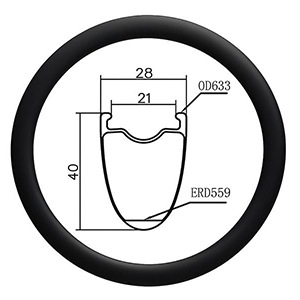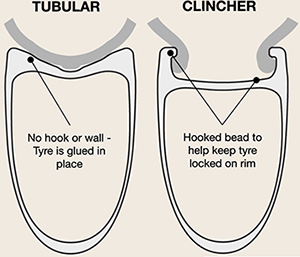
Best 700c Carbon Road Rims: A Complete Buyer's Guide
Upgrading your road bike with 700c carbon rims can truly transform your riding experience. These rims are lighter, stronger, and more aerodynamic than traditional aluminum wheels, helping you ride faster and handle more efficiently on every terrain.
Choosing the right carbon rims isn’t just about weight. You also need to think about rim depth and width, compatibility with your brakes and tires, and how durable they are over time.
By understanding these factors, you can pick the perfect 700c carbon road rims that match your riding style and goals.
Understanding 700c Carbon Road Rims
When it comes to upgrading your bike, 700c carbon road rims are a popular choice for many cyclists. These rims are designed specifically for road bikes and follow the 700c standard, which is the most common size for modern road cycling.
Key Factors to Consider When Choosing Carbon Road Rims
Choosing the right carbon road bike rims isn’t just about picking the lightest option. Several factors influence performance, comfort, and compatibility with your bike.
Rim Depth and Width
Depth: Deeper rims improve aerodynamics, helping you ride faster on flat roads.
Width: Wider rims provide better tire support and can improve stability and comfort.
Riding Style: Climbers may prefer shallower rims, while time-trial riders often choose deeper rims.

Aerodynamics and Performance Metrics
Aerodynamics plays a big role in how your carbon road rims affect speed. Deeper rims are designed to cut through the wind, reducing drag and letting you maintain higher speeds with less effort.
Rim Depth and Airflow
Shallow rims are lighter and easier to handle, especially on climbs.
Mid-depth rims offer a balance between speed and stability.
Deep rims excel on flat roads but can be affected by crosswinds.
Stiffness and Power Transfer
Stiffer rims transfer more of your pedaling power to the road, making sprints and accelerations more efficient.
Very stiff rims can feel harsher over rough surfaces, so consider comfort alongside performance.
Real-World Impact
Even small differences in rim design can affect your ride. Faster acceleration, smoother cornering, and better wind handling all come from rims optimized for aerodynamics and performance. Understanding these metrics helps you choose rims that match your riding style and goals.
Tubeless vs. Clincher vs. Disc Brake Compatibility
|
Feature |
Tubeless Rims |
Clincher Rims |
Disc Brake Rims |
|
Tire Type |
Sealant-based, no inner tube |
Standard inner tube |
Compatible with either tubeless or clincher, but designed for disc brakes |
|
Ride Comfort |
Better shock absorption, fewer flats |
Standard comfort, prone to pinch flats |
Depends on tire choice; disc brakes don’t affect comfort directly |
|
Weight |
Slightly lighter without tubes |
Slightly heavier due to inner tube |
Similar to tubeless or clincher; rotor adds minimal weight |
|
Braking Performance |
Works best with disc brakes |
Rim brakes only |
Optimized for disc brakes, consistent in all conditions |
|
Maintenance |
Requires sealant refills, occasional checks |
Easy to replace tubes |
Maintenance similar to tubeless/clincher plus rotor care |
|
Best For |
Long rides, endurance, fewer flats |
Casual or entry-level riders |
Riders using disc brakes or seeking all-weather performance |
Compatibility and Fit Guide
Choosing the right 700c carbon road rims means making sure they fit your bike and riding style. A rim that doesn’t match your tires, brakes, or frame can affect both performance and safety.
Tire and Rim Width
Make sure your tire width matches the internal width of the rim.
Wider rims offer better stability and comfort, while narrower rims are lighter and more aerodynamic.
Front and Rear Wheel Differences
Rear rims often need to handle more torque, so some models are reinforced.
Front rims prioritize handling and aerodynamics.
Brake and Frame Compatibility
Confirm that your rims match your brake type, rim brakes or disc brakes.
Check that your bike frame and fork provide enough clearance for the rim and tire combination.
Practical Tips
Always verify spoke count compatibility with your hubs.
Ensure the total wheel assembly doesn’t exceed your bike’s maximum weight limits.
By paying attention to rim width, brake type, and frame clearance, you can choose carbon road rims that fit perfectly and enhance your riding experience.
Installation and Setup Tips
Installing 700c carbon road rims correctly is key to safety and performance. Even small mistakes can affect ride quality and durability. Follow these tips to get your rims set up properly.
Preparing Your Wheels
Before installation, inspect your rims for any damage or defects. Check that your hub and spoke compatibility match the rim. Ensure you have the necessary tools, including a torque wrench, tire levers, and suitable brake pads for carbon rims.
Mounting Tires
Use the recommended tire width for your rim.
For tubeless setups, ensure the rim tape is correctly installed and the sealant is evenly distributed.
For clincher tires, carefully install the inner tube to avoid pinching.

Weight vs. Durability Trade-offs
When choosing 700c carbon road rims, you’ll notice a trade-off between weight and durability. Lighter rims make climbing and acceleration easier, but they may be more vulnerable to scratches and impact damage.
Lightweight Rims
High stiffness for efficient power transfer
Ideal for racing, climbing, and sprinting
Require careful handling to avoid damage
Durable Rims
Slightly heavier, but can handle rough roads and heavier loads
Absorb more vibrations for a smoother ride
Suitable for daily training, long-distance rides, or mixed terrain
Finding the Right Balance
Consider your riding style: speed-focused riders may prefer lighter rims, while endurance or commuter cyclists may prioritize durability.
Evaluate the terrain you ride on most often and how much maintenance you’re willing to perform.
By understanding the trade-offs, you can choose carbon road rims that match your performance goals while ensuring a safe and reliable ride.
Performance Reviews and Real-World Tests
Understanding how 700c carbon road rims perform in real-world conditions can help you make a better choice. Lab specs are useful, but actual riding experience shows how rims handle speed, corners, and varied terrain.
Maintenance and Care for Your Carbon Rims
Proper maintenance is key to keeping your carbon rims road bike performing well and lasting longer. Regular care helps prevent damage and ensures a safer ride.
Cleaning Your Rims
Use a soft cloth and mild soap to clean your rims after rides, especially in wet or muddy conditions. Avoid harsh chemicals that can damage the carbon surface. Regular cleaning also helps you spot small cracks or wear early.
Checking for Damage
Inspect your rims frequently for scratches, chips, or structural damage. Pay attention to brake tracks if you’re using rim brakes. Catching issues early can prevent more serious problems.
Tire and Brake Care
For rim brakes, use carbon-specific brake pads to avoid uneven wear.
For tubeless setups, check sealant levels periodically and top up as needed.
Make sure tires are inflated to the recommended pressure to reduce stress on the rim.
Storage Tips
Store your bike in a dry, temperature-stable area. Avoid leaning heavy objects on the wheels to prevent warping or denting.
By following these simple maintenance steps, you can keep your carbon fiber rims for a road bike in top condition, extend their lifespan, and enjoy a safer, smoother ride.
Conclusion
Choosing the right 700c carbon road rims can make a big difference in your riding experience. By considering factors like weight, durability, compatibility, and performance, you can pick rims that match your style and goals.
Whether you prioritize speed, comfort, or budget, understanding aerodynamics, installation, and maintenance will help you get the most from your rims.
With proper care and the right choice, your carbon road rims will enhance every ride, making cycling faster, smoother, and more enjoyable.
Categories
New Blog
Copyright © 2025 Top-Fire Carbon Technology Co., Ltd. All Rights Reserved. Power by

IPv6 network supported